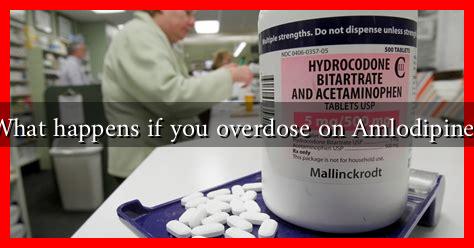-
Table of Contents
What Happens If You Overdose on Amlodipine?
Amlodipine is a widely prescribed medication primarily used to treat high blood pressure (hypertension) and angina (chest pain). As with any medication, there is a risk of overdose, which can lead to serious health complications. Understanding the implications of an amlodipine overdose is crucial for patients and caregivers alike. This article delves into the effects, symptoms, and necessary actions to take in the event of an overdose.
Understanding Amlodipine
Amlodipine belongs to a class of drugs known as calcium channel blockers. It works by relaxing the blood vessels, allowing blood to flow more easily, which helps lower blood pressure and reduce the heart’s workload. While effective, it is essential to adhere to prescribed dosages to avoid adverse effects.
What Constitutes an Overdose?
An overdose occurs when a person takes more than the recommended dose of a medication. For amlodipine, the typical prescribed dose ranges from 2.5 mg to 10 mg per day. Taking significantly more than this can lead to an overdose. Factors that can influence the severity of an overdose include:
- Age and weight of the individual
- Presence of other medical conditions
- Concurrent use of other medications
Symptoms of Amlodipine Overdose
The symptoms of an amlodipine overdose can vary in severity and may include:
- Severe hypotension (low blood pressure)
- Bradycardia (slow heart rate)
- Dizziness or lightheadedness
- Fatigue or weakness
- Fainting or loss of consciousness
- Nausea and vomiting
In extreme cases, an overdose can lead to shock, heart failure, or even death. It is crucial to recognize these symptoms early and seek medical attention immediately.
Case Studies and Statistics
While specific statistics on amlodipine overdoses are limited, a review of poison control center data indicates that calcium channel blocker overdoses, including amlodipine, are not uncommon. According to the American Association of Poison Control Centers, there were over 1,000 reported cases of calcium channel blocker overdoses in 2020 alone.
One notable case involved a 65-year-old male who accidentally ingested 40 mg of amlodipine instead of his prescribed 5 mg. He presented to the emergency department with severe hypotension and bradycardia. After receiving intravenous fluids and medications to stabilize his blood pressure, he was monitored for 24 hours before being discharged with no lasting effects.
What to Do in Case of an Overdose
If you suspect an overdose of amlodipine, it is vital to act quickly:
- Call emergency services or go to the nearest hospital.
- Provide medical personnel with information about the amount taken and the time of ingestion.
- Do not induce vomiting unless instructed by a medical professional.
Medical professionals may administer activated charcoal to limit absorption of the drug or intravenous fluids to manage blood pressure. In severe cases, medications such as calcium gluconate may be used to counteract the effects of the overdose.
Preventing Amlodipine Overdose
To prevent an overdose, patients should:
- Follow the prescribed dosage strictly.
- Keep medications in a secure place away from children.
- Communicate openly with healthcare providers about any other medications being taken.
- Set reminders for medication times to avoid double dosing.
Conclusion
Overdosing on amlodipine can lead to serious health complications, including severe hypotension and bradycardia. Recognizing the symptoms and knowing how to respond can be life-saving. Always adhere to prescribed dosages and consult healthcare providers with any concerns regarding medication. For more information on managing medications safely, visit the FDA’s guidelines on safe medication use.
In summary, while amlodipine is an effective treatment for hypertension and angina, awareness of the risks associated with overdose is essential for safe usage. By taking proactive steps, patients can minimize the risk and ensure their health remains a priority.


